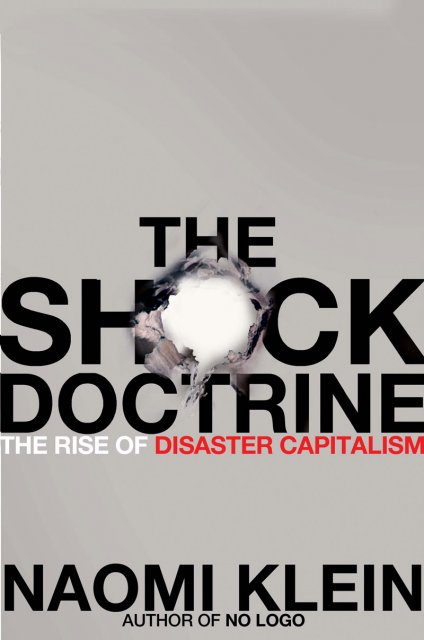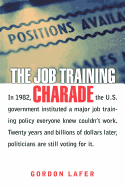 In one further step toward political oblivion it seems likely that, when the Republican National Committee meets next week, they will approve a resolution to refer to the Democratic Party as the "Democrat Socialist Party" in all formal communications. Thus, Republicans have managed to combine their 5th-grader's taunt of refusing to use the proper suffix for our party and their ridiculous habit of labeling anything other than massive regressive tax cuts as socialist.
In one further step toward political oblivion it seems likely that, when the Republican National Committee meets next week, they will approve a resolution to refer to the Democratic Party as the "Democrat Socialist Party" in all formal communications. Thus, Republicans have managed to combine their 5th-grader's taunt of refusing to use the proper suffix for our party and their ridiculous habit of labeling anything other than massive regressive tax cuts as socialist.
In even more amusing turn of events, Frank Llewellyn, the national director of the actual Democratic Socialists of America, is apparently offended by the change. According to Dave Weigel of the Washington Independent, Llewellyn said "“It’s objectionable..because they’re giving socialism a bad name by associating it with the Democrats, who are the second-most capitalist party in the world."
But rather than simply labeling this event as comedy and moving on, I think we should rather treat this as an opportunity to reflect on the meaning of our party and the future of American political thought.
What Does it Mean to Be a Democrat?
Part of what makes this event so ironic is that conservative elements in the Republican Party clearly believe that the Democratic Party has a much more coherent ideological posture, and a much more left-leaning ideological posture than we actually have. This isn't anything new: Republicans called the Democratic Party an agent of "creeping socialism" in the 1930s when the Party consisted of a tenuous alliance between urban liberals and southern reactionaries; Republicans considered Bill Clinton - who was, before, during, and after his presidency a moderate right-of-center Democrat - a dangerous radical, an unreconstructed McGovernite.
In reality, the Democratic Party is still an extremely ideologically diverse party, running from socialists (Bernie Sanders isn't in the party formally, but you could certainly find his ideological kin in parts of the Democratic Party) to conservatives like Ben Nelson. In some ways, we're more left-leaning than we were during the Clinton years - on the use of economic stimulus, the importance of public investments versus deficit spending, the public plan in health insurance reform, some elements of foreign policy and trade. In other ways, we've become more conservative - we don't talk about gun control much any more, I would argue we haven't significantly shifted on financial regulations yet, and so on.
And that's something I've always considered to be somewhat problematic. An open tent is a wonderful thing, but it does present certain problems. One of the largest is what overall direction we want to have as a party on the country. As one of my old mentors once said, one's politics should always begin with a vision of how you would want the world to look like if you were in charge, and then working how to get from where you are to where you want to go. Historically, political parties at their core are those visions. Communist parties had a vision of the end of capitalism and a new world to follow; in a different way, so socialist and social-democratic parties have a vision of a better world. Even conservative parties, like our own Republican parties, have a vision of an imagined past, a golden age they seek to return to, a sense of tradition they want to preserve.
At various times, the Democratic Party has had strong visions, although never uncontested. The New Deal vision was dominant, although challenged by the Southern Democrats, from 1932-1948; what has often been referred to as "Cold War Liberalism" was quite strong from '48 through to the collapse of the "Cold War consensus"; we've had "civil rights" Democrats and "New Left" Democrats, and so on. Yet for all the strum and drang that we hear about Progressive Democrats versus Establishment/DLC/DINO/whatever else you want to call them, it's more often been a conflict over policy or strategy, as opposed to ideology. Even within DailyKos, for example, there's a good amount of ideological diversity and fluidity, and a certain disagreement over what ideological terms even mean. Witness for example the lively debate in this thread over the difference between "progressive" and "liberal."
What Does "Socialist" Mean in 2009?
Of course, the irony of the Republican's newest rebranding exercise is compounded by the fact that it appears that socialism is becoming less and less of a negative label. While I take Rasmussen's results with a degree of skepticism, I'm less surprised that "adults under 30 are essentially evenly divided: 37% prefer capitalism, 33% socialism, and 30% are undecided."
After all, you would have to be older than 20 years old to have even been born at a time when the Cold War had any real meaning. I'm 25, and I only vaguely recall the feeling of a world divided between the Soviet Union and the United States. I was woken up as a child to witness the fall of the Berlin Wall - none of my undergraduate students were even born in 1989. For them, socialism (if it means anything) is something they associate with campus radicals (who are essentially harmless), Europe (which they tend to like), and attacks on Barack Obama. And while I'm not the first to say this, the relentless Republican association of any progressive policy or politics with socialism I think will have the long-term effect of eroding public fear of socialism, at least in so far as socialism is understood to mean broadly progressive public policy like progressive tax cuts and increases, universal health care, Keynesian fiscal policy, and so forth.
But the interesting thing is that even the Republicans seem to have given up the ghost when it comes to the Evil Empire. When Republicans accuse Democrats of being socialists, they tend to refer to the social democratic parties of Europe - Mitt Romney accuses the Democrats of trying to make the U.S look like Sweden, and Michael Steel believes that Democratic rule is "marching America toward European-style socialism." The problem is that "European-style socialism" isn't very scary - no secret police, no show trials, no one-party state, no gulags. It means higher taxes, more regulation, universal health care, more social spending, a bigger public sector, but that's not something that bothers most people.
What Would It Mean For the Democratic Party to Become a Social Democratic (or Democratic Socialist) Party?
All of this makes the idea that the Democratic Party is a Social Democratic Party or a Democratic Socialist Party rather ironic, because those would be two very strong visions of the future to base a party around.
Democratic socialism broadly refers to an political philosophy that, unlike social democrats, does not accept the existence and continuation of capitalism as necessary but unlike Leninist communists abjures the idea of violent revolution as the means of achieving its end. You can think of Eugene V. Debs as an archetypal democratic socialist - someone who viewed capitalism as an inherently immoral and exploitative institution, but who sought to abolish poverty through the electoral victory of the Socialist Party and the passage of legislation. The modern Democratic Socialists of America - who might well have a trademark infringement case on their hands- are a group that emerged out of several factional disputes in the 1970s and 1980s, and have been closely associated with the American democratic socialist Michael Harrington. As their manifesto states, "we are socialists because we reject an international economic order sustained by private profit," which fulfills the first point of the description, while their statement that "our vision of socialism is a profoundly democratic one, rooted in the belief that individuals can only reach their full potential in a society that embodies the values of liberty, equality, and solidarity" fulfills the second.
Social Democrats historically diverged from their socialist colleagues over the question of the question both of political change versus violent revolution, but also over the question of whether socialism would be achieved in a sudden revolution or a gradual evolution,
The point of all of this is that if the Democratic Party would actually become a social-democratic party, it would be a massive ideological shift comparable to nothing since the dramatic transformation of the Democratic Party from the party of laissez-faire into the party of the New Deal in the 1930s, or the transformation of the Democratic Party from the party of the Segregated South to the party of Civil Rights in the 1960s.
Ultimately, it would involve the Democratic Party grappling with two issues we don't really deal with - first, our relation to capitalism, and second, our conception of class.
On the issue of capitalism, our party is badly divided between those who are pro-market (especially in regards to major questions about regulation, especially financial regulation, taxation of corporations, estates, and high-income earners, impact of climate change on corporate behavior, copyright, patents and other forms of intellectual property, and the nature of free trade) and those who are more pro-worker, or pro-consumer, or pro-environment. If the Democratic Party would become a social democratic party, we would have a single vision: that unregulated capitalism is an inhumane socio-economic system, that the economy should be reformed and regulated to gradually move towards a different economic order where basic necessities are a matter of human rights rather than ability to pay and where workers have a voice in their working conditions. .
On the issue of class, our party and indeed many if not most Americans have an extremely fuzzy conception of what class means. You can see this in Democratic messaging which frequently conflates "working families" with "middle class families" or "working poor" with "working families," which uses the term "middle class" to include people making $30k a year and people making $225k a year. If we were a Social Democratic Party, we would have a very clear idea, based on hundreds of years of thinking about what it means to be a worker, and a solid sense that we are on the side of the working class when it comes down to a clash between their interests and the interests of corporations or employers.
What Might We Become?
Ultimately, I don't think the Democratic Party will become a social democratic or democratic socialist party, even in the event that the country as a whole shifts substantially to the left. To be frank, I don't think the ideological foundations for a capitalism-and-class based political party. If I'm wrong, I'd love to hear it.
What I do think could happen is for the Democratic Party to become a genuine Progressive Party, in the sense of the Progressive Party of 1912 and 1924 (interesting historical note: in 1912, Theodore Roosevelt won 27% of the vote and 88 electoral votes as a Progressive; in 1924, Robert LaFollette won 17% of the vote and 13 electoral votes as a Progressive).
The major difference between socialist or even social-democratic parties and progressive parties is that while the former are focused on class conflict, the latter tend to believe in social organic-ism, a belief that society is organized around functional groups rather than individuals, that all groups play an important roll in contributing to the whole, and that all groups are part of a single "industrial commonwealth." As members of a commonwealth, all citizens are entitled to social and economic rights and protections against the "hazards of modern life," and are entitled to a seat at the table in the governance of industry. Rather than seeing class conflict as between the working class and the bourgeoisie, progressives see conflict in populist terms between "the people" and "the powerful" or "special interests" or the "trusts," or between the "producing classes" and the "parasites."
In my opinion, I think if universal health care, EFCA, and climate change pass, and if the broad turn from deficit reduction and balanced budgets to Keynesian stimulus and public investments continues, then we may, in time move to a political environment in which the Democratic Party can be a Progressive Party, while democratic socialists and social democrats can exist as a legitimate part of the political culture, the left-most edge of "mainstream" politics.
But in order to get there, we will have to do a lot of political work to push our party to be more progressive, and eventually confront the more pro-corporate members of our party. As Frederick Douglass once said:
"If there is no struggle there is no progress. Those who profess to favor freedom, and yet depreciate agitation, are men who want crops without plowing up the ground. They want rain without thunder and lightning. They want the ocean without the awful roar of its many waters. This struggle may be a moral one; or it may be a physical one; or it may be both moral and physical; but it must be a struggle. Power concedes nothing without demand. It never did and it never will."
[+/-] Read More...
[+/-] Summary only...
 Note: This is a cross-post from my group blog The Realignment Project and DailyKos.
Note: This is a cross-post from my group blog The Realignment Project and DailyKos.










